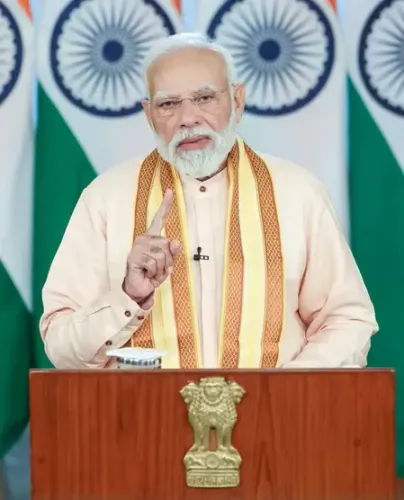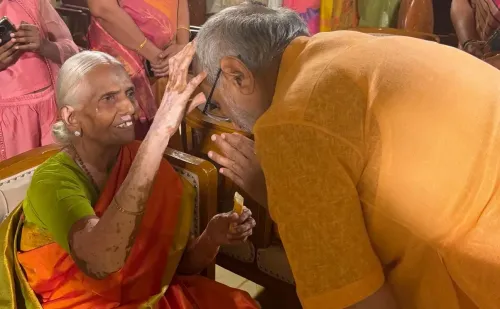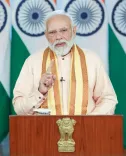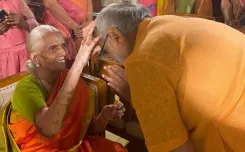Should CM Mohan Yadav Push for a Snake Census?
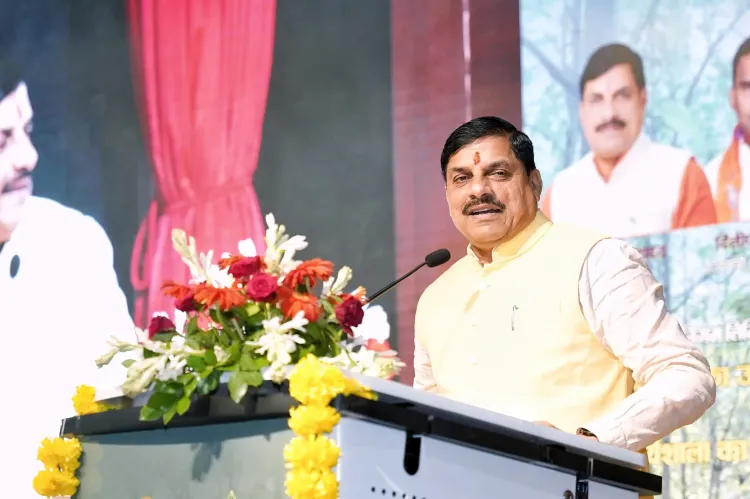
Synopsis
Key Takeaways
- Mohan Yadav calls for a formal snake census in Madhya Pradesh.
- The rise in snakebite deaths is a major concern.
- Urgent public health measures and awareness are needed.
- Wildlife experts express mixed reactions to the census proposal.
- King Cobras' absence highlights ecological imbalances.
Bhopal, July 24 (NationPress) The Chief Minister of Madhya Pradesh, Mohan Yadav, has reignited discussions in wildlife advocacy circles by calling for a comprehensive census of snakes throughout the state. This demand arises from a notable increase in fatalities due to snakebites and the glaring absence of a national standard for monitoring snake populations.
During the 50th anniversary of the Forest Development Corporation at the Indian Institute of Forest Management (IIFM) in Bhopal, Yadav remarked, "I frequently pose challenging questions, and it recently dawned on me that we lack a formal method to tally snakes among reptiles. This issue extends beyond our local boundaries; it highlights a void prevalent across the nation. When I raised this matter on a national level, your Forest Minister recognized its importance and committed to further investigation. With Nag Panchami approaching, I've introduced new challenges. Snakebite incidents continue to be the primary cause of unnatural deaths in our state."
"We must begin treating this as a significant public health issue—enhancing awareness and adopting all possible preventive measures. If snakebite fatalities rank among the highest in our state, why not confront this challenge and take action?" he urged forest officials to undertake proactive measures ahead of Nag Panchami.
Previously, he questioned why only tigers are included in wildlife surveys while snakes—"equally crucial to ecological balance and human safety"—remain ignored.
Recent statistics highlight the urgency: more than 4,200 snakebite cases were documented in Madhya Pradesh in June 2025 alone, with alarming increases noted in districts like Sagar, Rewa, and Khandwa.
Experts link this rise to heightened snake activity during the monsoon and delays in medical treatment, especially in rural locales.
However, CM Yadav's initiative has sparked mixed reactions among wildlife specialists.
"There is no proven methodology for counting snakes across vast landscapes," shared a former Principal Chief Conservator of Forests, who preferred to remain unnamed.
"It might work in localized areas, but is impractical on a state level," the former official commented.
The Forest Department is reportedly collaborating with the Wildlife Institute of India (WII) to devise a feasible counting strategy.
Furthermore, the Chief Minister stressed the need for increasing rescue centers and zoos, asserting that conservation and public safety must be aligned.
"Wildlife is important—but so are people’s lives," he stated, advocating for a comprehensive approach that includes education, quick response systems, and community involvement.
CM Yadav's statements come amidst a growing public interest in wildlife and a broader movement for inclusive conservation.
While the practicality of a snake census remains to be seen, his call has ignited a national dialogue on how India tracks and safeguards its lesser-known species.
Regardless of whether this initiative gains momentum or remains merely symbolic, it has already challenged traditional perspectives. This is not the first time Chief Minister Yadav has sought attention for snake conservation.
In a previous address to Indian Forest Service (IFS) officers during a meeting in Bhopal, he raised the issue of the declining presence of King Cobras in the area, asserting that their absence has led to an increase in other snake species.
He urged the Forest Department to consider reintroducing the King Cobra to the ecosystem, a suggestion that resulted in the acquisition of two specimens from a zoo in Southern India, which are now located in Bhopal. So, what compels the call for a snake census?
In a recent forest conservation meeting, the Chief Minister emphasized that snakes have historically been excluded from national wildlife assessments, despite their ecological significance and growing threats to public health. His comments represent a broader plea for inclusive conservation that transcends the focus on charismatic megafauna like tigers.


